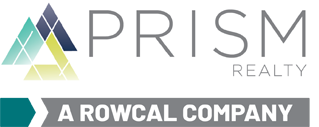Amending HOA bylaws and covenants is a time-consuming and sometimes arduous task and not done regularly. Concerns like vague language in the HOA covenants that create more questions than answers or issues no longer relevant to the way the association operates might be things the Board could update using existing covenants rather than proposing an amendment. However, there are instances when a new rule needs to be put in place, or an existing covenant amended to address safety concerns or serious issues within the community. Or an amendment may need to be added to correct outdated language that has been nullified by new legislation or changes to local, state, or federal laws.
HOA boards must be aware of the proper procedures for changing the governing documents in the rare case they need to act. Covenants and bylaws are considered legal documents, and a legal professional should review amendments to legal documents. An attorney will ensure that amendments are legally compliant and that changes to one set of governing guidelines do not contradict existing language in another.
First, let’s define the governing documents:
The Declaration of Covenants, Conditions, and Restrictions (CC&R) are the documents that define the rights and obligations of an HOA. These documents are usually established when the community is developed. The CC&R defines property-use restrictions and dispute resolution procedures. It includes specific guidelines relating to yard maintenance, insurance, dues, and assessments. This document also outlines the consequences for non-payment and gives the HOA power to act. Amendments to the CC&R require a membership vote.
Rules & Regulations expand or interpret the CC&R and govern the actions or conduct within the community. A membership vote isn’t typically required when changing Rules or making new ones because they’re not legal documents. Members must be notified of any changes and given access to review the changes. Be sure to record when and how you inform the community about a Rules change and what the change entailed. Keep in mind if a change is made to the Rules that contradict the CC&R, the legal language in the CC&R will override the Rules.
Bylaws are specific guidelines for BOD operations and service to the community. The Bylaws establish details like board member elections, the number of BOD members allowed to serve at a given time, terms of office, responsibilities, meeting requirements, etc. Amendments to the Bylaws require a membership vote.
The amendment process for CC&R and Bylaws may vary a bit depending on state laws. Here are the basic steps to making amendments to HOA governing documents.
Amendment Proposal
A community member may submit a detailed description of a proposed amendment to the Board for review. The Board must review and accept it before it can be presented at a meeting.
Notice of Proposal
The Board must send notice of proposed amendments to the community between 10 and 30 days before the next board meeting (check your governing documents for the exact timeline).
The information must include a detailed description of the proposed amendment, including the purpose for the change and the intended outcome the amendment will have.
Meeting
The amendment proposal must be on the agenda for the meeting. The Board is required to open the floor to homeowners for discussion and questions regarding the proposed amendment(s) during this meeting and keep it open until all homeowners have had the opportunity to speak on the subject.
Vote
Members will vote on the proposed amendment(s) after everyone has had a chance to speak. Amendments to HOA bylaws require a majority vote to pass. Typically, two-thirds or three-quarters of the members present at the meeting make up a majority; check your governing documents to verify which.
Amendment Approval
If approved, the Board must send a detailed notice of the amendment(s) to the entire community, typically within 15 days of the vote (refer to governing documents for specific dates and deadlines).
Amendments to the Declaration of Covenants, Conditions, and Restrictions must be recorded with the county recorder’s office before HOA members are notified of the change.
Bylaws amendments do not need to be recorded with the county; they become effective as soon as the community receives notice of the change.
Boards should always explore a less involved process to make a change before proposing an amendment. Consider what an amendment is trying to accomplish, explore all the solutions, and make sure the authority to make modifications doesn’t already exist in the covenants. When an amendment or rule change is deemed necessary, make sure the entire Board fully understands the scope of work and involvement it takes to move forward.
It’s essential to make sure your HOA documents are current, correct, and not contradictory to any laws, or worse – breaking any laws. Prism Realty Management is here to help your Board make the right choices for your community. Ready to learn more? Reach out to us anytime
(512) 609-8098 or info@prismrp.com.





